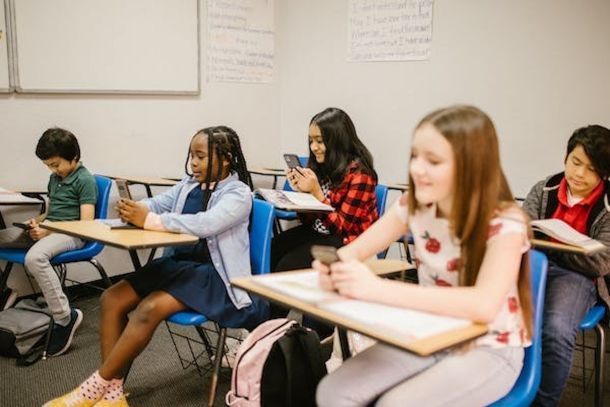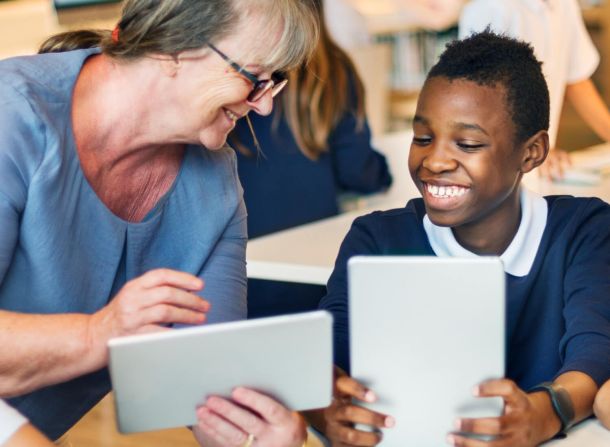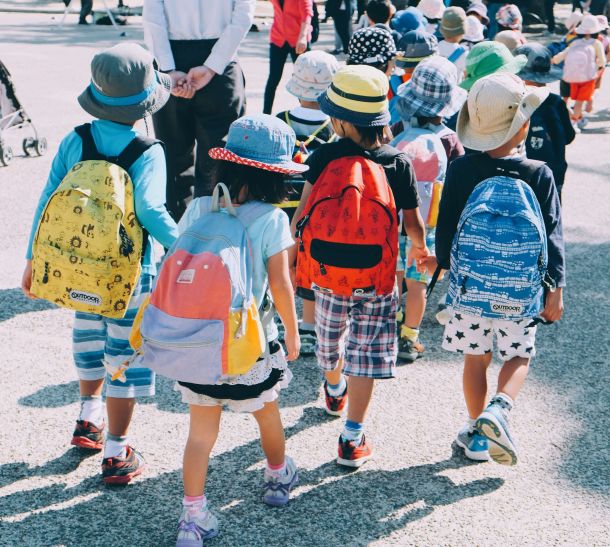
How do you make learning a pleasant experience?
10 January, 2024
Just as many parents want their children to discover the joy of reading, teachers have their own ideal: to motivate children to learn with pleasure.
Since children usually associate school with the idea of obligation, of an environment hostile to individual development, of uniformity, the learning process is rarely perceived as a pleasant one.
Luckily, research shows that the attitude towards learning can become a favorable one if it is educated from an early age. And herein we have to look into the elements that influence the pleasure of learning: the way parents make future projections for their children, the natural predisposition to learning, the child's will and effort, but also the pedagogical ingenuity, i.e. who is responsible for the quilality of your child's learning, says Oana Moraru, education expert, founder of the Helikon School in Bucharest.
Contents:
Contents:
- One way of looking at learning
- How a pleasant learning experience looks like?
- What helps children find learning pleasant?
One way of looking at learning
Researchers point out that parents have a major influence on their children's attitude towards learning. Sometimes they project their own anxieties onto the children's future and expect the learning process to be similar or opposite from theirs, if they had a negative experience.
Education strategy expert David Willows mentioned in one of Kinderpedia's podcast episodes that parents don't always understand learning. They often draw comparisons to their own learning experiences from many years ago and have expectations of what learning should be like for their children. In contrast, children have different perspectives: they perceive learning as a memorable, disappointing or even boring process, depending on their age and school experiences, as shown by Audrey Akoun and Isabell Paileau in „Aprendre autrement avec la pedagogie positive” .
Educational consultant Pamela Mundy highlighted at the First7 Early Years Education Conference 2023 in Bucharest that learning is a continuous process, but what develops until 3 years old is critical to the further development of a child. Up until this age, children learn essentials.
Unfortunately, educational systems often promote rapid learning of basic academic skills, so do parents. However, learning should not be viewed as a race, Mundy points out.
How a pleasant learning experience looks like?
In his book "The Pressured Child" psychologist Michael Thompson documented stories of children who were traumatized by school and everything they were forced to do without understanding the purpose of those actions. David, whose education started promisingly, is one of them.
“When I was 4 years old, I looked around and realized that mom could read, dad could read, Maura could read, but I couldn't. I didn't like it so the next year I basically taught myself to read... After a while things become forced and you have to read things you don't want to read. I was told “sorry but I have to. I have to because I say so, and I asked 'Why?'"
Specialists in education or psychologists specializing in types of learning look at this process less from the perspective of the amount of knowledge accumulated, and more from the perspective of the experience itself.
Thus, most define learning, and especially a pleasant learning experience, as discovery (at each child's own pace), then as socialization. And learning for pleasure is often one that is done not only with the mind, but also with the heart and all the senses.
As such, there are a few things to keep in mind as a parent or educator when trying to cultivate this joy.
What helps children find learning pleasant?
1. Understanding their perspective on learning
Children often say how they would like learning to be like, and they do so with great sincerity. Most of the time, for them, learning is about seeking positive outcomes, feeling useful, and building strong bonds with teachers or students, Thompson says.
Moreover, for them school often means an environment where they can form deep friendships, a space for socializing, where they meet their friends, and less a place to accumulate academic results.
Even when they don't initially feel drawn to learning because of a lack of family support, kids can later develop an appreciation for the process, Thompson says. They do not conform to stereotypes imposed by adults and are eager to make personal connections, regardless of the environment or people around them.
To impose a certain way of learning on a child, based only on one's own experience, is a mistake in this broad perspective of learning.
They can be replaced by a more inclusive, personalized and empathetic discourse. Or they can be countered by exercises that give the child time for reflection and show alternatives.
2. Defining a learning style
Every child has their own learning style. The school, par excellence, puts all children together and provides a uniform, standard, and often impersonal type of education. Hence the lack of connection that children often feel towards a system that does not meet their learning needs.
However, if we help children understand learning from a young age and at least some of it occurs to their liking, the chances of success are high.
In this sense, some children respond better to a learning style based on visual elements – diagrams, helpful illustrations. Others seek kinesthetic stimuli – the need to experience everything firsthand. Adapting to children's learning style, at least in the early stages, helps them approach what they have to learn more easily.
3. A positive learning environment
Children need support and encouragement from parents and teachers to enjoy learning. Oana Moraru emphasizes that a child enjoys being guided and supported in his learning process. Self-confidence develops when he is encouraged to try and recover from any difficulty encountered, with the support of family and teachers.
The child's self-confidence develops when those around him teach him that it's okay to take risks, that they can catch up easily, and with a lot of support from the family, she adds.
If a child doesn't pay attention or can't concentrate, it doesn't necessarily mean that they aren't listening to you, but it can signal some limiting beliefs. Maybe when they started exploring, someone around them didn't give show trust and unconditional love.
That's why, as adults, we should, first of all, have understanding for ourselves when we make a mistake or do something wrong. And if a child falls a little behind, the parent should stop, take a breath, and create a strategy to get the child caught up in school.
A positive learning environment should also counteract the stereotypes with which we let children approach learning, and which relate to their ability to learn. Audrey Akoun and Isabelle Boileau call them myths. Some of these are:
• "You have nothing if you don't contribute nothing"
• "We don't do ... in our family"
• "You are/are not able to..."
• "To become smart, you have to suffer"
• "I'm too weak..."
They can be replaced by a more inclusive, personalized and empathetic discourse. Or they can be countered by exercises that give the child time for reflection and show alternatives.
On the other hand, the motivation of children in the context of online learning is even harder to maintain. Online school doesn't respond to the children's need to have a social role, warns Oana Moraru. A child needs the safety net of social relationships. Fundamental for a child up to 15-16 years old is the tribe, the relationship with the others. Adults can easily learn or work online because they laid the foundation in childhood. Children cannot do this in the long term, because they need connection with each other.
That is why, in a context of online learning and maintaining the pleasure of studying, more support, empathy and understanding especially from parents is recommended.
👉 At Kinderpedia, we've developed a digital tool that gives schools and kindergartens the chance to display best practice models on the guided use of the next-gen technology, and help educators provide an interactive and enjoyable learning experience.
The platform, available on desktop and smartphone, has a complete set of functionalities that cater to administrative and financial management, classroom activity and school progress, as well as communication needs with families of enrolled children.
For principals and school managers, Kinderpedia features provide an overview of school activities and communication. With intuitive options and a familiar interface, teachers can quickly plan lessons, provide personalized feedback and get progress reports in just a few clicks. Students have access to safe and interactive learning resources, and take responsibility for managing assignments or teaching deadlines. And families are permanently connected to school activity and progress, gaining more confidence in the teaching-learning process.
Kinderpedia thus concentrates the entire ecosystem of the school or kindergarten in one place, so that school principals and teachers can direct more of their efforts and time to educational activities and to a constructive dialogue with parents.
4. Role models
From the first years of life, learning is done by imitation. Children imitate adults, whether you consider yourself a role model or not. Remember David, who we mentioned earlier, who wanted to learn to read because he saw the adults around him reading.
That's why it's important that you, as a parent, know your own passions, and if they revolve around learning, show them how learning happens for you, what challenges you have, what you've learned in life.
And as a teacher, you stand as a role model from the start through your life experience and knowledge gained in a certain field. However, the child needs to feel that he is guided, and that the teacher is his partner in this process.
As Olimpia Meșa, an expert in learning design, observes, precisely because children now have access to any kind of information so easily, educators should no longer see themselves as the gatekeepers of information, but aim to become the best information facilitators, at a given time.
5. Accepting their mistakes and limitations
How children understand and manage mistakes in learning greatly influences their approach to education. The expectations that parents have about how their children should learn can create unrealistic pressures and frustrations that they don't know how to properly manage.
The child learns about mistakes and their impact after the age of 9, when they begin to take on various responsibilities. By this age, the child can learn various mechanisms to cheat the system or maintain appearances.
Oana Moraru highlights the importance of understanding mistakes as part of the learning process, emphasizing that they are not indicators of the level of knowledge, but represent preliminary stages of understanding. True learning takes time and experience.
It's essential that, at this stage, children are not discouraged or punished for mistakes, but encouraged to recognize and correct errors. Moraru argues that progress often comes from trials and failures, and children who learn from their mistakes get back up and try again.
That is why she doen't recommend participation in competitions before the age of 13. Psychologists say that the biggest inferiority complexes are formed between the ages of 6 and 12. In this age range, children are superficial and make human mistakes, but in competitions, they feel guilty for possible failures more than in any other context. Easy learners have time to digest information in their own style because the school gives them that time.
Competitiveness is still necessary, even useful, say education consultants, because it also depends on reporting to those around you. Children need to be allowed to get a little frustrated about their own judgement errors because the body knows that when it is frustrated and there is no outsider coming to solve the frustration, they will have to use their inner strength.
Some of the details outlined in this article were presented by Oana Moraru during the 2020 edition of the "Motivation in education" conference, an event organized in partnership with Kinderpedia.
6. Details that arouse their curiosity
There are so many ways to sprak the kids' curiosity, even without the fear of AI taking taking your spot. Because, say many of those working with children, artificial intelligence lacks the human element capable of personalizing the experience.
Pamela Mundy encourages parents or educators to create so-called fascination traps. For example, wrapping a book in colored or glittery paper to attract and hold their attention.
For her part, British specialist in early years education Alice Sharp has lots of ways to use objects at hand - nothing fancy or expensive - to make learning letters and sounds, for example, fun.
And here too, the principles of active learning can be successfully applied, based on offering much more personalized, more interactive experiences, precisely for understanding concepts and their correct application. Feedback plays a particularly important role at this stage.
Let's remember though that learning for pleasure can be fun, but it shouldn't be equated with continuous fun. Learning for pleasure shouldn't be pursued blindly. Not everything in life is learned for pleasure or in pursue of the satisfaction of the learned reuslts, possibly a reward.
7. The challenge of creative thinking
Pamela Mundy notes that educators often ask questions like "Can you do.../tell me...?" Which often require only one answer.
Or if the questions were formulated in the form of "What if...?", "Why does this happen...?", "When do we say that...?", "What did you want to draw here?" . For such answers, children need to think creatively and autonomously, and such discussions can lead to stories, encourage real debate, rather than boring lectures.
To give parents more confidence in helping children learn for fun, Oana Moraru says that whatever solution a parent or a teacher applies, it won't work initially. It's important not to lose focus and to insist long enough. One day, when you are most tempted to give up, you will see changes in the child's behavior. Information distills slowly and begins to blossom when the child needs it - the little ones have delayed reactions to our pedagogical solutions.
Some of the details outlined in this article were presented by Oana Moraru during the 2020 edition of the "Motivation in education" conference, an event organized in partnership with Kinderpedia.

Kinderpedia
The complete communication and management solution for schools and childcare centres.
Simplifies teachers' work and brings parents closer to their children's school progress.
Recommended articles
Want to improve your center quality? Kinderpedia is here to help! Not only do we provide thousands of informational content pieces like blog posts, podcasts, webinars and more, we are also makers of the #1 Rated and Reviewed Childcare Software.







